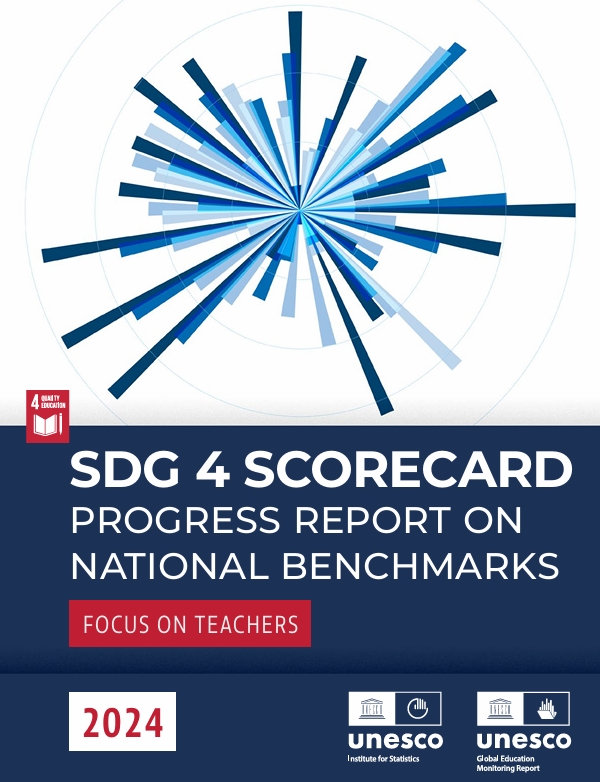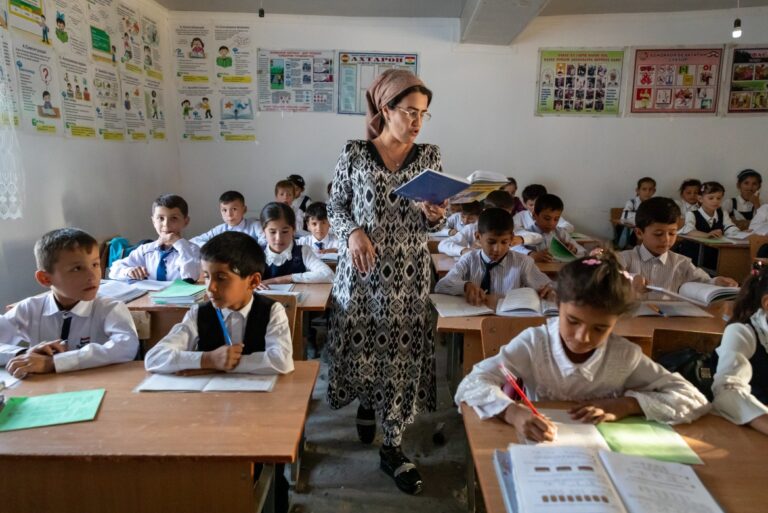SUMMARY
Setting SDG 4 benchmarks is a novel process. It has involved countries specifying their contribution to the achievement of the global targets based on their national plans and policies. Overall, 79% of countries have submitted benchmarks, or national targets, to be achieved by 2025 and 2030 for at least one of eight SDG 4 indicators. This process, supported by the UIS and the GEM Report, responds to the Education 2030 Framework for Action which had called on countries to establish ‘appropriate intermediate benchmarks … for addressing the accountability deficit associated with longer-term targets’.
In total, 54% of the potential 2025 benchmark values (i.e., for all 8 indicators and the 23 disaggregation possibilities) have been submitted. Apart from the public expenditure indicators, for which there is a common benchmark for all countries, the two benchmark indicators with the highest submission rates are the early childhood education participation rate (72%) and the completion rate (65%). The two indicators with the lowest submission rates are the gender gap in upper secondary completion (36%) and school internet connectivity (32%). The latter is a new benchmark indicator and countries may have had too little time to set a target if they did not already have one.
Overall, the classification of individual countries according to the speed with which they are improving and the analysis of countries with baseline, recent, and benchmark values suggests insufficient progress towards national benchmarks. Progress is close to the national targets in primary school internet connectivity (from 69% in 2015 to 79% in 2022 or just 3 percentage points off track) and in pre-primary school teachers with minimum required qualifications (from 75% in 2015 to 85% in 2022, just 2 percentage points off track). Progress is significantly more off track for the remaining six indicators. In two of them, countries are moving backwards: the gender gap among countries with a disadvantage for boys (where the gap has increased from 6.8 to 9.5 percentage points) and public education expenditure (where the median country has fallen from 13.8% to 12.7%, moving further away from the minimum benchmark of 15% of total public expenditure).
Among the three indicators with the highest data coverage, the percentage of countries that have indicator levels above 95% and/or have recorded fast progress is 40% in the early childhood education participation rate, 28% in the upper secondary completion rate, and 21% in public education expenditure (i.e., countries have achieved both benchmarks). However, challenges remain with the large share of country-indicator pairs for which there are either no data (32%) or there are insufficient data to establish a trend (14%). These gaps prevent comprehensive assessment of progress, especially with respect to the indicator on the minimum level of proficiency.
Three key messages come out of this report. First, more communication is needed in order to address issues related to indicator definitions, data sources, data gaps, and sector plan targets. Second, a systematic mechanism needs to be introduced to the process for countries to seek clarifications and provide feedback. Third, more work is needed to explain what policies are linked to slow or fast progress towards the achievement of national benchmarks. These messages will be the focus of a dedicated session during the UNESCO Conference on Education Data and Statistics taking place in Paris in February 2024.
This report focuses on the benchmark indicator on qualified and trained teachers. Globally, the most common requirement to teach at all education levels is a bachelor’s degree. Teachers are more likely to have the minimum required qualifications in countries where the minimum requirement is higher. About 45% of countries in pre-primary education and 53% in primary and secondary education have a policy that makes continuous professional development compulsory. The higher the academic level required to become a teacher, the more likely it is that the country also has a compulsory continuous professional development policy.






